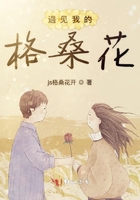Grace of habit and the bright beauty of its long blue spikes of ragged flowers above rich, glossy leaves give a charm to this vigorous wader.Backwoodsmen will tell you that pickerels lay their eggs among the leaves; but so they do among the sedges, arums, wild rice, and various aquatic plants, like many another fish.Bees and flies, that congregate about the blossoms to feed, may sometimes fly too low, and so give a plausible reason for the pickerel's choice of haunt.Each blossom lasts but a single day;the upper portion, withering, leaves the base of the perianth to harden about the ovary and protect the solitary seed.But as the gradually lengthened spike keeps up an uninterrupted succession of bloom for months, more than ample provision is made for the perpetuation of the race - a necessity to any plant that refuses to thrive unless it stands in water.Ponds and streams have an unpleasant habit of drying up in summer, and often the pickerel weed looks as brown as a bulrush where it is stranded in the baked mud in August.When seed falls on such ground, if indeed it germinates at all, the young plant naturally withers away.
In the Bulletin of the Torrey Botanical Club, Mr.W.H.Leggett, who made a careful study of the flower, tells that three forms occur, not on the same, but on different plants, being even more distinctly trimorphic than the purple Loosestrife.As these flowers set no seed without insects' aid, the provisions made to secure the greatest benefit from their visits are marvelous.Of the three kinds of blossoms, one raises its stigma on a long style reaching to the top of the flower; a second form lifts its stigma only halfway up, and the third keeps its stigma in the bottom of the tube.Now, there are two sets of stamens, three in each set bearing pollen grains of different size and value.
Whenever the stigma is high, the two sets of stamens keep out of its way by occupying the lowest and middle positions, or just where the stigmas occur in the two other forms; or, let us say, whenever the stigma is in one of the three positions, the different sets of stamens occupy the other two.In a long series of experiments on flowers occurring in two and three forms -dimorphic and trimorphic - Darwin proved that perfect fertility can be obtained only when the stigma in each form is pollenized with grains carried from the stamens of a corresponding height.
For example, a bee on entering the flower must get his abdomen dusted with pollen from the long stamens, his chest covered from the middle-length stamens, and his tongue and chin from the set in the bottom of the tube nearest the nectary.When he flies off to visit another flower, these parts of his body coming in contact with the stigmas that occupy precisely the position where the stamens were in other individuals, he necessarily brushes off each lot of pollen just where it will do the most good.Pollen brought from high stamens, for example, to a low stigma, even should it reach it, which is scarcely likely, takes little or no effect.Thus cross-fertilization is absolutely essential, and in three-formed flowers there are two chances to one of securing it.
WILD HYACINTH, SCILLA or SQUILL.QUAMASH
(Quamasia kyacinthina; Scilla Fraseri of Gray) Lily family Flowers - Several or many, pale violet blue, or rarely white, in a long, loose raceme; perianth of 6 equal, narrowly oblong, widely spreading divisions, the thread-like filaments inserted at their bases; style thread-like, with 3-lobed stigma.Scape: 1 to 2 ft.high, from egg-shaped, nearly black bulb, 1 to 1 1/2 in.
long.Leaves: Grass-like, shorter than flowering scape, from the base.Fruit: A 3-angled, oval capsule containing shining black seeds.
Preferred Habitat - Meadows, prairies, and along banks of streams.
Flowering Season - April-May.
Distribution - Pennsylvania and Ohio westward to Minnesota, south to Alabama and Texas.
Coming with the crocuses, before the snow is off the ground, and remaining long after their regal gold and purple chalices have withered, the Siberian scillas sold by seedsmen here deserve a place in every garden, for their porcelain-blue color is rare as it is charming; the early date when they bloom makes them especially welcome; and, once planted and left undisturbed, the bulbs increase rapidly, without injury from overcrowding.
Evidently they need little encouragement to run wild.
Nevertheless they are not wild scillas, however commonly they may be miscalled so.Certainly ladies' tresses, known as wild hyacinth in parts of New England, has even less right to the name.
Our true native wild hyacinth, or scilla, is quite a different flower, not so pure a blue as the Siberian scilla, and paler; yet in the middle West, where it abounds, there are few lovelier sights in spring than a colony of these blossoms directed obliquely upward from slender, swaying scapes among the lush grass.Their upward slant brings the stigma in immediate contact with an incoming visitor's pollen-laden body.As the stamens diverge with the spreading of the divisions of the perianth, to which they are attached, the stigma receives pollen brought from another flower, before the visitor dusts himself anew in searching for refreshment, thus effecting cross-pollination.
Ants, bees, wasps, flies, butterflies, and beetles may be seen about the wild hyacinth, which is obviously best adapted to the bees.The smallest insects that visit it may possibly defeat Nature's plan and obtain nectar without fertilizing the flower, owing to the wide passage between stamens and stigma.In about an hour, one May morning, Professor Charles Robertson captured over six hundred insects, representing thirty-eight distinct species, on a patch of wild hyacinths in Illinois.
The bulb of a MEDITERRANEAN SCILLA (S.maritima) furnishes the sourish-sweet syrup of squills used in medicine for bronchial troubles.














